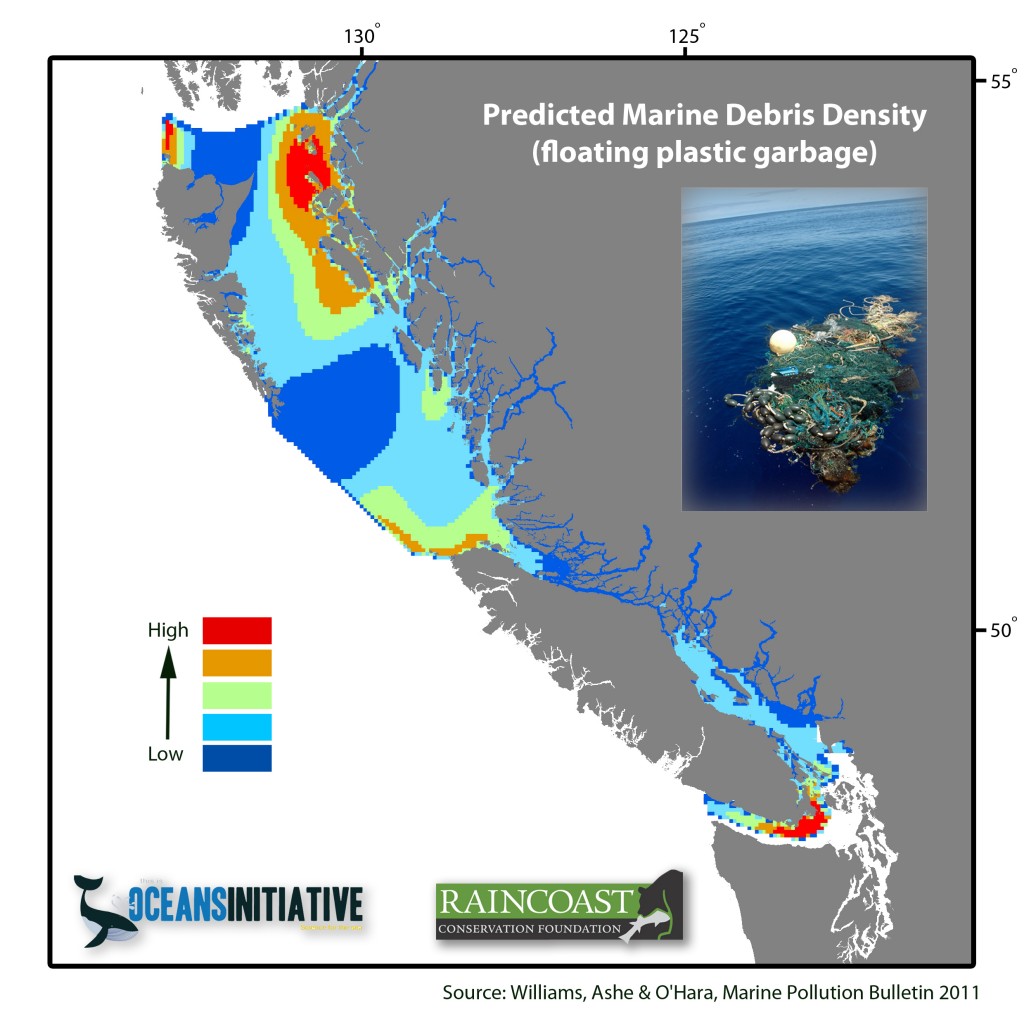
Happy (?!?) Great Canadian Shoreline Cleanup Day! We hope you’re reading this post on your smart phone, on your way to a beach to clean up plastic.
The ocean needs all the help it can get, from people everywhere and in all walks of life, to remove plastic from the ecosystem before it chokes something. This is a practical and tangible thing we can do to promote better stewardship of our coastal environment.
We recently published a paper that provides the first estimate of how much plastic is floating in BC coastal waters. The answer ain’t pretty.
RIGHT NOW, THERE ARE TENS OF THOUSANDS OF PIECES OF PLASTIC AND STYROFOAM, FIST-SIZED OR BIGGER, FLOATING IN BC WATERS.
And most of the plastic accumulates in places far from big cities. That’s a problem, because our perception of the problem is influenced by how visible or cryptic it is. With Raincoast, we conducted systematic surveys of the BC coast, used the the data to estimate abundance and distribution of 11 marine mammal species, sharks and now garbage. By overlaying the maps of wildlife and plastic distribution, we are able to identify where marine mammals might be encountering marine debris that they eat by accident or get tangled in. These higher-risk areas are also well out of sight, so the scale of the marine plastic problem can only be underestimated.
Much of our work deals with that aspect of human nature: out of sight, out of mind. After the Deepwater Horizon Incident/BP oil spill in the Gulf of Mexico, we combined publicly available data in a novel way to estimate that every dead dolphin recovered after the spill may represent another 50-250 deaths that went undetected. Similar work needs to be done in BC to understand cryptic forms of human-caused mortality: porpoise and dolphin bycatch in unmonitored fisheries; oiling of seabirds from small spills and pumping oily bilge water; entanglement in marine debris; ship and vessel strikes for whales and dolphins. Actually, the to-do list can feel pretty overwhelming sometimes. Which is why it feels so good to accomplish something tangible.
Like picking up plastic off the beach.
So, get out there, and tell us how you did! We will too.

